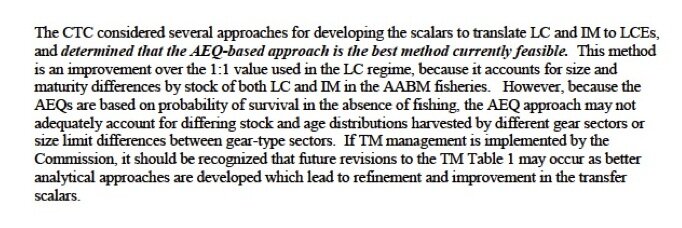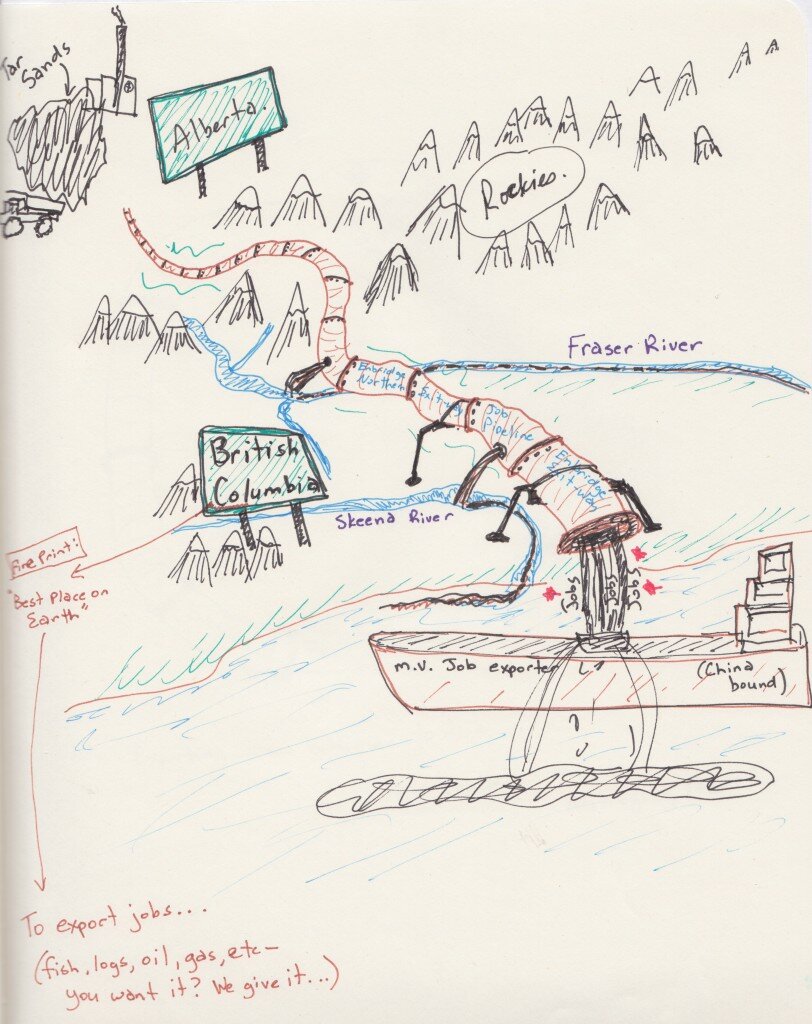
You can't be serious...?
Sometimes when one is doing research on wild salmon, salmon ‘management’, salmon conservation, salmon rehabilitation, and the like… one may come across things that bring pause, and an occasional head shake…
Today, I was searching around for information on Chinook salmon. My path led me to the ; a place I often land in my salmon searches. Specifically, my search led me to a report titled:
“Development of the Technical Basis for a Chinook Salmon Total Mortality Management Regime for the PSC AABM Fisheries. February 2011”
(It’s down the right hand column of the home page… and only 218 pages).
I tend to be someone who often advocates for “meaning what you say and saying what you mean“. I have varying degrees of success at this, but always looking to improve.
One of my intentions for this website/weblog is to try and present a variety of views on salmon — specifically wild salmon and our rather tenuous relationship with them.
And so when I read a title that suggests that we are looking for a ‘technical basis’ to manage Chinook based on “total mortality”… it does leave me puzzling. Did we manage based on ‘partial’ mortality before?
Well… we based on AABM… which translates to “Aggregate Abundance Based Management“. I won’t get it into it now, but in essence, the AABM means we fish less when Chinook stocks are in trouble and more when they are in good shape.
I know… rocket science.
Part of the problem is that it is done by “aggregate” meaning based on groups of Chinook stocks up and down the coast (Alaska, BC and Washington) that have potential spawners counted through various methods… various methods of accuracy…
There is also ISBM, which is “individual stock-based management” where information from individual stocks is considered when making fisheries decisions.
The move to TM based fisheries… and no that’s not “trademark” as in:
“this is our fishery management regime… TM“.
It’s “total mortality”.
From what I can see it means that Chinook catch numbers will now also include undersize Chinook or otherwise that may incidentally die in fisheries. Some types of fisheries are permitted to keep undersize or otherwise fish (e.g. some net fisheries) — other aren’t (e.g. sport fisheries) and thus undersize or oversize have to be released.
Or in the case of sport fisheries, when there is an imposed limit — say 2 Chinook a day — one person in a boat may ‘limit out’ first, yet keep fishing. If they catch a bigger fish then the two their keeping for their limit, the smaller one goes overboard “for the seals”.
(this isn’t the case with all rec fishers, however, as one myself, I’ve certainly seen it happen often enough)
_ _ _ _ _ _ _
As the Commission report describes it:
The TM management regime would estimate catch and the associated incidental mortality (IM) in a fishery, and constrain the fisheries based on defined limits to TM rather than LC [Landed Catch].
… [Total mortality] is the sum of the landed catch and the associated incidental mortalities from fishing…
Hey, now that makes sense, less try and account for all the fish killed in fisheries as opposed to just what shows up at the dock (e.g. canneries or otherwise)…
In other words, it’s sort of like a full accounting for what military folks like to call “collateral damage”… or that other innocuous fisheries term “by-catch”.
Almost all fisheries have size restrictions, so one can imagine the number of undersized fish caught, for example, in commericial troll fisheries… and by the time an undersize fish has been swinging around on troll gear for a awhile, it’s probably not going to do too well when it’s “released”…
_ _ _ _ _ _ _
For your pondering:
In 2009, the total commercial troll Chinook catch in Southeast Alaska alone was almost 176,000
Seine Chinook catch was over 54,000 and
Sport Chinook catch was over 69,000
With a total Chinook catch in Southeast Alaska just under 300,000
_ _ _ _ _ _ _ _ _
In northern BC… over 75,000 Chinook caught in commercial troll fishing.
34,000 in sport fisheries.
On West Coast Vancouver Is. … commercial troll over 58,000 Chinook caught.
Sport fishery over 66,000 Chinook.
So throw in another 230,000 Chinook caught (or so).
_ _ _ _ _ _
Not included here is the Juan de Fuca, Salish Sea/Georgia Strait, or Fraser River mouth catch numbers. Not much going on their commercially, but lots of sports fisheries.
Total 2009 Chinook catch numbers — on what the Commission calls ISBM fisheries — was almost 205,000 with over half of those caught by sport fisheries (approx. 116,000) and First Nation (approx. 53,000) the rest was test fisheries and commercial.
_ _ _ _ _ _
The estimated “Incidental Mortality” (IM) — e.g. numbers not included in these numbers — appears to be estimated at close to 10%. (…coincidentally, about the same approximate percentage of Chinook catch in BC, by First Nations…e.g. 12% as compared to the approximate 50% caught by sport fishers )
(And remember, much of these number are based on raging estimates)
Sport fisheries are only covered by creel surveys (e.g. interviews with fisherfolks) and estimates suggest about 10% coverage, as well as fly overs to count boats…
Ever dwindling though, due to funding cuts to Fisheries and Oceans monitoring and enforcement budgets.
So throw in another 70,000 (at least) dead Chinook into the equation.
(that’s almost the entire Fraser River Chinook run in some years…)
_ _ _ _ _ _
So some of this “Incidental Mortality” stuff begins to make sense once the glaze is peeled back from one’s eyes in trying to read mulit-hundred page documents that have an executive summary that reads like this…

Pacific Salmon Commission Chinook Tech docs
I think I spent more time scrolling back to the Acronym guide… and my new ‘techno-bumpf’ translation app.
However, here’s my favorite part:
The CTC also formed a Total Mortality Work Group (TMWG) in 2003 to develop the technical analyses and approaches necessary to implement total mortality regimes. The TMWG made substantial progress on methods for translating the relationship between nominal landed catch and the abundance indexes (AIs) for AABM fisheries into TM units, but was not able to complete the work due to lack of consensus on the interpretation of the TM language in the Agreement.
The “CTC” is the Chinook Technical Committee within the Pacific Salmon Commission… of which there are 32 people. I’m not sure how many of those reached “total mortality” to become part of that working group…
Maybe another name might be appropriate…?
_ _ _ _ _ _ _
However, this incredible depth of scientific analysis, techncical committees of over 30 people for one species of salmon, and so on… certainly makes one start to ponder “what is being spent on total mortality working groups…” which largely guide “fisheries”?
As opposed to trying to design: “how do we get as many fish onto the spawning grounds as possible — working groups”
“how do we avoid having to go to capital expensive, concrete-laden, long-term expensive hatchery options… which often do more damage then good — Working Group”
And… “how do we make sure those fish have healthy habitat — Working Group“

















